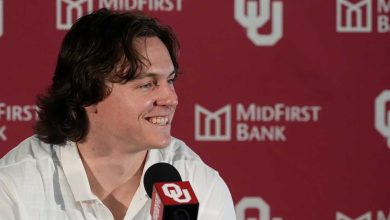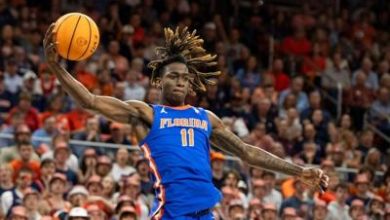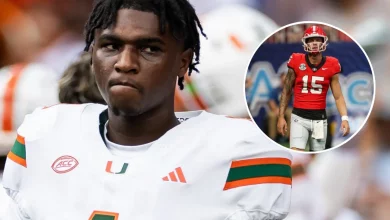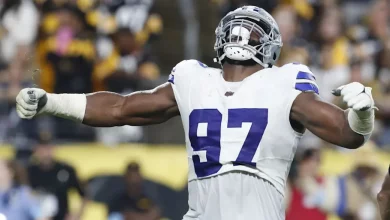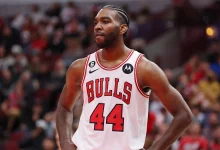Maalik Murphy, a former quarterback for Texas, claims that leaving Duke “wasn’t his choice.”

Maalik Murphy, a Former Quarterback for Texas, Claims Leaving Duke “Wasn’t His Choice”
In the world of college football, transfers have become a significant part of the landscape, reshaping rosters and defining careers. Athletes looking for more playing time, better systems to fit their skill sets, or simply a fresh start often find themselves moving from one program to another. One of the most talked-about transfer stories recently has been that of Maalik Murphy, a quarterback who was once part of the Texas Longhorns’ quarterback room and later found himself with the Duke Blue Devils.
Murphy’s journey through the college football ranks has been marked by a series of twists and turns, each one adding a layer of intrigue to his career. Recently, Murphy made headlines by claiming that leaving Duke “wasn’t his choice.” This statement, paired with the complexities of his college football experience, has sparked questions about his time at both Texas and Duke, as well as his future prospects in the sport.
This article will explore the circumstances surrounding Maalik Murphy’s transfer from Texas, his subsequent time at Duke, the reasons behind his statement that leaving Duke “wasn’t his choice,” and how it all factors into his ongoing football journey.
Maalik Murphy’s Early Career: A Promising Start at Texas
Maalik Murphy’s football journey began with high hopes. A highly touted recruit out of California, Murphy came to the University of Texas with expectations of competing for a starting role and leading the Longhorns to a new era. Standing at 6’5″ and weighing around 240 pounds, Murphy had the physical tools that many scouts and coaches crave in a quarterback. His strong arm, ability to make deep throws, and athleticism made him a top prospect during his recruitment.
Murphy was part of a highly competitive quarterback room at Texas that included notable players such as Quinn Ewers and Hudson Card. With a crowded depth chart and the Longhorns coming off several seasons of inconsistency at quarterback, it wasn’t long before Murphy found himself fighting for playing time behind these more established figures.
In his first two years at Texas, Murphy didn’t see much game action. Although he showed promise in limited opportunities, it became clear that the Longhorns were committed to developing Ewers, a highly rated prospect who had been brought in with the expectation of becoming the program’s long-term solution at quarterback. Despite his raw talent, Murphy found himself buried on the depth chart, and it became increasingly difficult for him to get meaningful snaps.
This situation led to significant uncertainty about Murphy’s future with the program. His playing time remained limited, and as a result, rumors began swirling that he might look for a new opportunity elsewhere.
Murphy’s Transfer to Duke: A New Opportunity
After spending two seasons with Texas, Murphy made the decision to enter the transfer portal, a move that is becoming all too familiar in the modern college football era. His decision to leave Texas was rooted in a desire for more playing time, as well as a chance to develop further as a quarterback. With a solid skill set but little experience at the collegiate level, Murphy needed an environment where he could get a legitimate shot to start and showcase his abilities.
Duke University, which has been known for developing quarterbacks under head coach Mike Elko, appeared to offer a perfect fit for Murphy. The Blue Devils had seen some success under Elko’s leadership and were looking to build upon that foundation. Murphy was expected to compete for the starting job and potentially turn the page to a new chapter in his football career.
At Duke, Murphy found himself in an unfamiliar but promising situation. The Blue Devils had a solid offensive line, a reputable coaching staff, and a program that was still growing. His time with Duke was expected to be a crucial moment in his development as a quarterback, allowing him the chance to lead a program and potentially even boost his draft stock for future NFL prospects.
Maalik Murphy’s Time at Duke: The Disappointment of Leaving
While the transition to Duke initially seemed promising for Maalik Murphy, his time with the Blue Devils did not go as planned. Murphy began to see playing time in practices, but things took an unexpected turn, leading to a situation where Murphy felt that leaving Duke was not his choice.
Murphy’s statement that “leaving Duke wasn’t his choice” has sparked intrigue and speculation. It is important to understand the circumstances surrounding this comment, as it sheds light on the internal dynamics of the program. Murphy has been described as a player who is fully invested in his development and in the team’s success, which is why the suggestion that leaving Duke was beyond his control has raised questions about what went wrong.
Murphy’s lack of game action and apparent dissatisfaction with his situation led to his departure. While details remain somewhat unclear, it is possible that coaching decisions, team dynamics, or even health-related issues played a role in his exit. The quarterback competition at Duke may have been more difficult than anticipated, and Murphy could have struggled to earn the trust of the coaching staff or simply faced challenges in adapting to the program’s specific needs.
However, despite the vagueness surrounding the exact details, Murphy’s statement speaks volumes about his experience. The sense of disappointment and frustration he felt during his time at Duke suggests that the relationship between player and coaching staff had begun to sour, or at least, that the promises made when he first transferred were not fully realized.
The Broader Context of Transfers in College Football
Maalik Murphy’s situation is not unique. College football has seen a dramatic rise in the number of players transferring from one program to another in recent years. The NCAA’s decision to allow players to transfer freely once without penalty has created a landscape where athletes are increasingly willing to move in search of better opportunities.
For players like Murphy, transfers are often a way to reset their careers and find a program that better suits their style of play. However, the process is not always smooth, as players must adjust to new systems, compete for starting roles, and navigate internal program dynamics. In many cases, players who transfer end up being caught in situations where the coaching staff’s vision does not align with the player’s expectations or desires. This misalignment can lead to frustration, disillusionment, and, ultimately, a decision to leave the program—sometimes under less-than-ideal circumstances.
Murphy’s experience at Duke is a prime example of how a highly talented athlete can struggle to find success when faced with the intricacies of a new program. It also highlights the challenges of navigating the transfer process, as players move from one program to another, hoping to find a fresh start but often facing unforeseen obstacles.
What’s Next for Maalik Murphy?
Following his departure from Duke, many are wondering what the future holds for Maalik Murphy. As a highly touted recruit coming out of high school, Murphy still has immense potential, and his physical tools remain impressive. His arm strength, size, and athleticism make him an intriguing prospect for both college programs and the NFL. However, his time at Texas and Duke has raised questions about his ability to translate those tools into consistent performance on the field.
It is unclear where Murphy will go next, but it is possible that he will look for a new program where he can earn a starting role and finally have the chance to showcase his skills in a way that he has been unable to do thus far in his college career. He may choose to transfer again, seeking a fresh opportunity at another school, or he could consider entering the NFL draft, depending on the feedback he receives from scouts and coaches.
If Murphy does transfer to another program, it is likely that he will look for a situation where he can immediately compete for a starting job and receive the kind of coaching and development he has been seeking. There are a number of programs across the country that may be in need of a quarterback, and Murphy’s experience could make him an attractive option for teams looking to rebuild or solidify their quarterback depth.
Additionally, Murphy’s comments about leaving Duke “not being his choice” could have ramifications beyond just the football field. His statement may impact his relationship with coaches, both at Duke and in the larger college football community. It will be important for Murphy to navigate these challenges carefully, maintaining a level of professionalism and focus on his development as a player.
Conclusion: The Journey Continues for Maalik Murphy
Maalik Murphy’s journey in college football has been marked by both promise and disappointment. His departure from Duke, framed by his assertion that “leaving wasn’t his choice,” reveals the complexities of being a highly regarded athlete in the modern era of college football. Transfers, competition, and team dynamics play a huge role in shaping a player’s career, and in Murphy’s case, the combination of these factors has led to uncertainty about his next steps.
For now, Maalik Murphy’s future remains up in the air. However, given his natural talent, he remains a player worth watching. Whether he transfers to another program, enters the NFL draft, or takes a different path, Murphy’s journey will be closely followed by fans and analysts alike. He still has the tools to succeed at the highest level, and with the right situation, he could yet fulfill the promise that once had him on the path to stardom.



